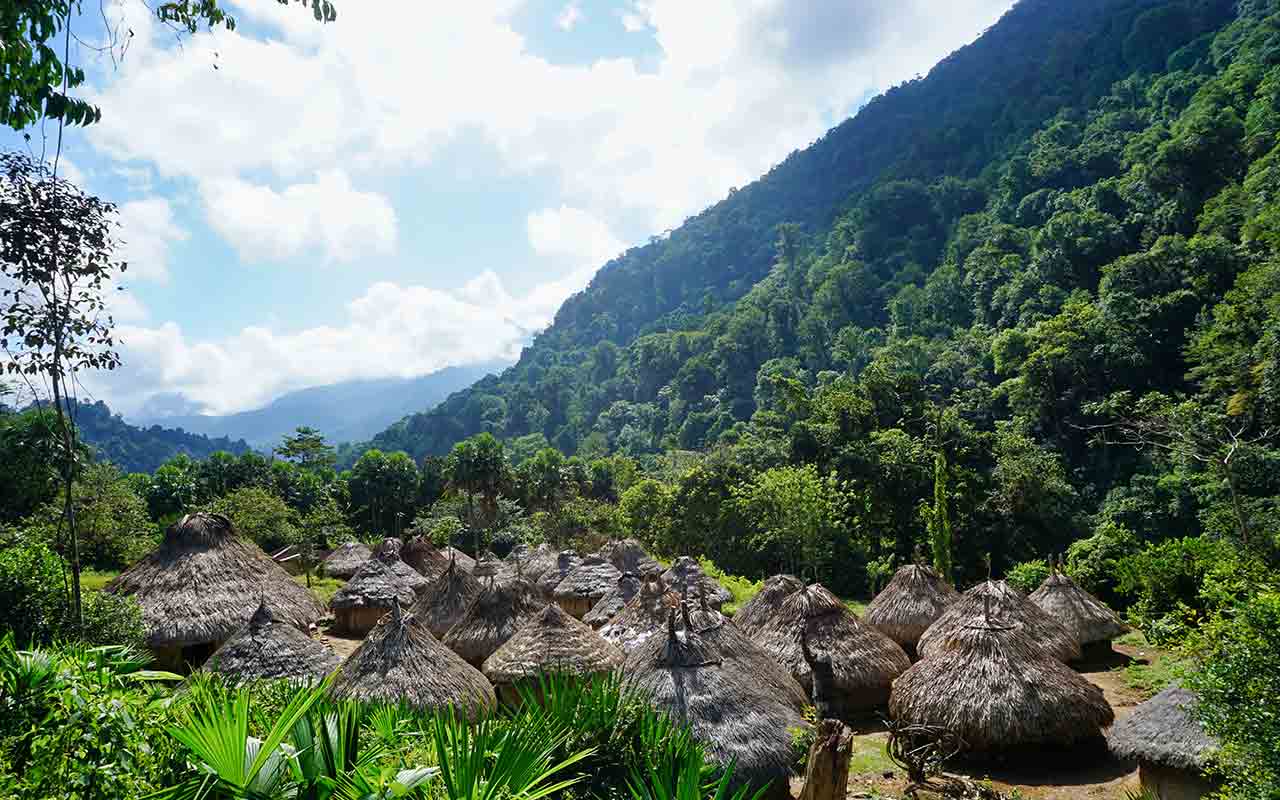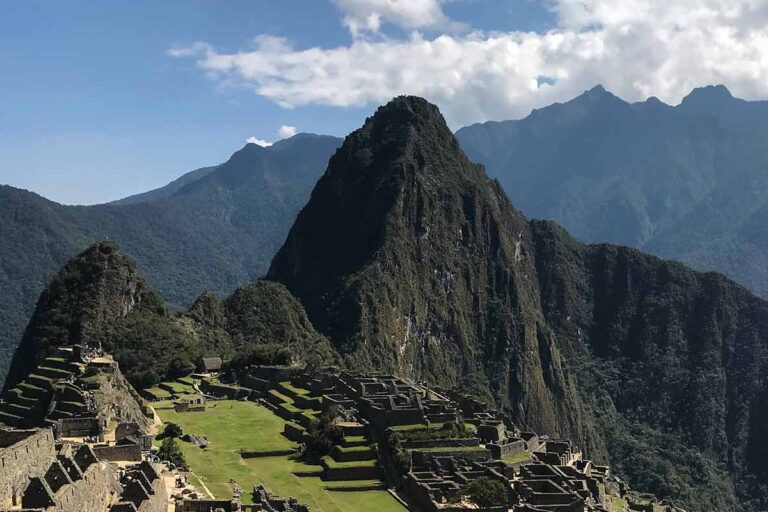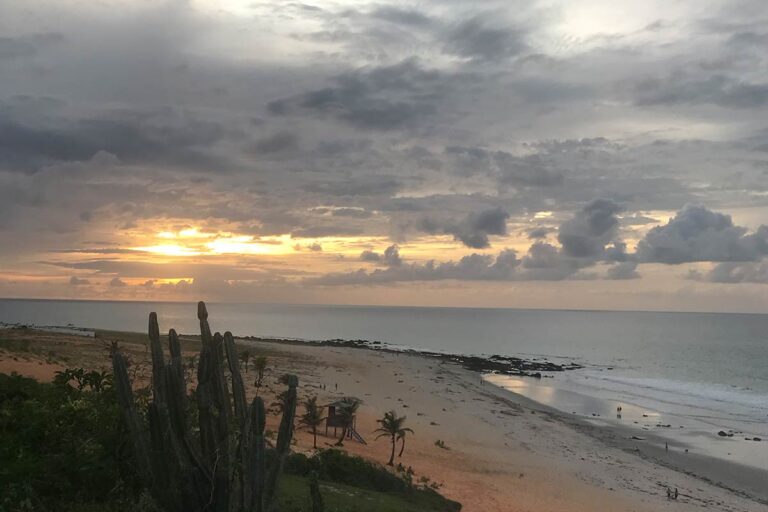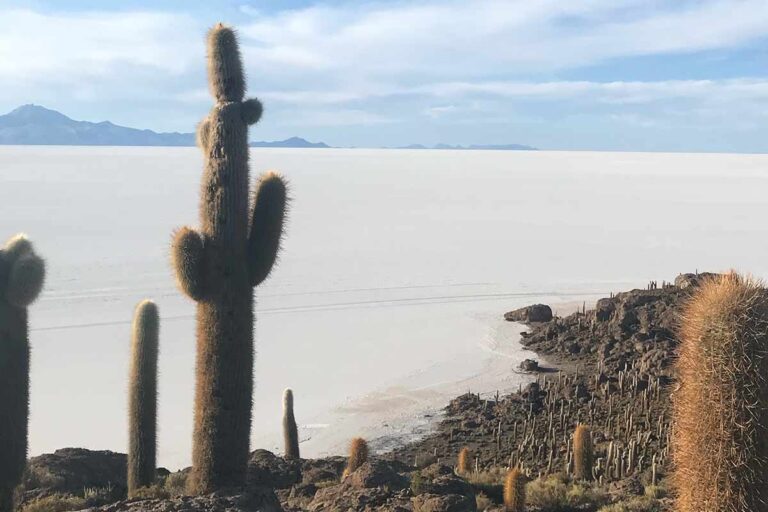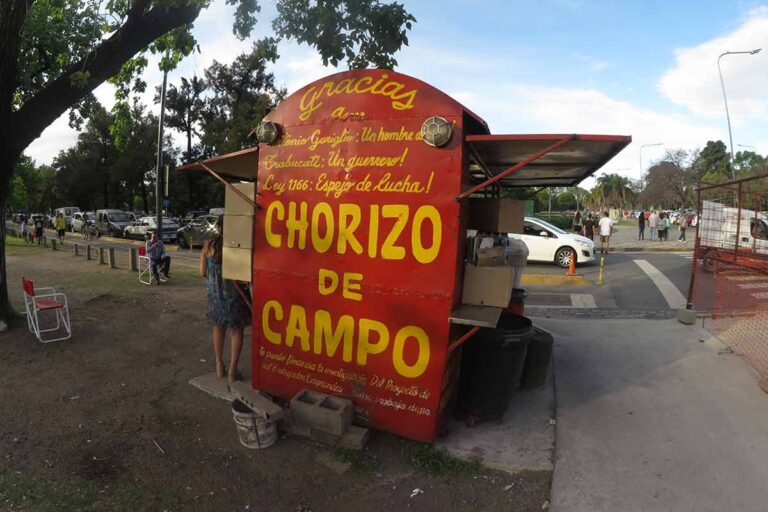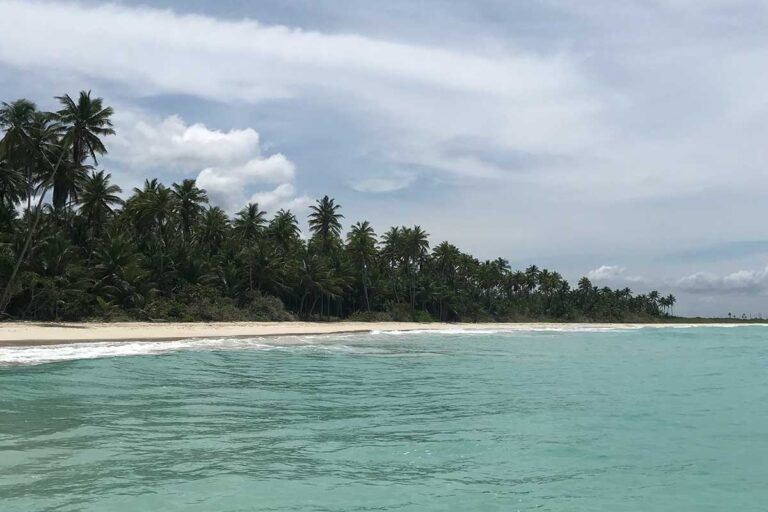Things to do in Santa Marta
Welcome to our guide on things to do in Santa Marta, Colombia.
Located on Colombia’s stunning Caribbean coast, Santa Marta is a popular destination on many Colombian itineraries.
Not only is it close to the sea with some good beaches on hand; it’s also close to some really amazing destinations such as Tayrona National Park, the Guajira Desert and The Lost City (Ciudad Pérdida).
Backpacking Santa Marta
Within Santa Marta itself, you can find a rich culture with many great landmarks to see, as well as a popular nightlife hub.
In this guide we’ll explore Santa Marta, what to see and do, the best places to stay as well as our own top tips for a backpacking trip here.
How to Get to Santa Marta?
As one of Colombia’s most popular hubs, getting to Santa Marta is pretty easy.
There’s dozens of domestic flights arriving here from all over the country, with most coming from the capital of Bogotá.
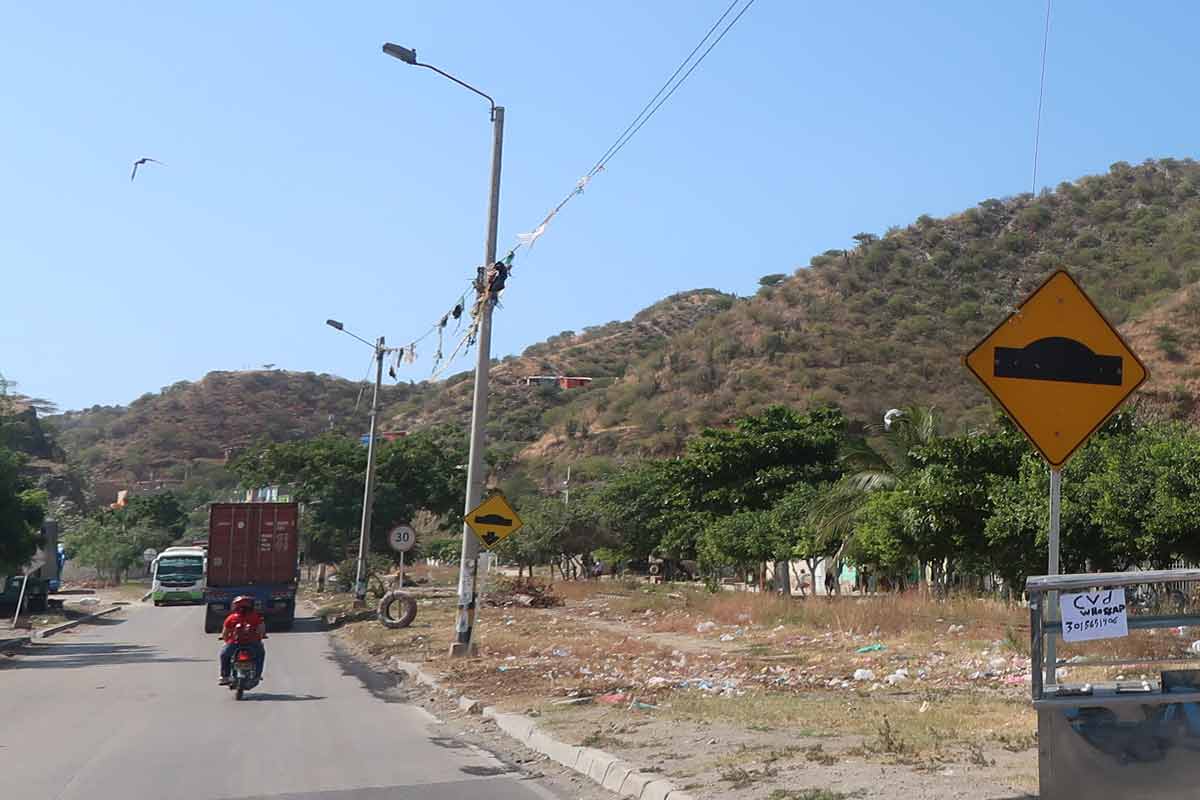
They’re pretty cheap too, with some of these fares being as low as $25 depending on the season. Buses are another option, however these can be time-consuming depending on where you’re coming from.
A bus from Cartagena in the north takes around 5 hours, whilst a journey from Medellin will take a lengthy 26 hours.
Are you already in Colombia or planning a trip? You can get more ideas from our backpacking Colombia itinerary if you want ideas on where to go next.
Things to do in Santa Marta
We’ll be honest here; most of the top things to see are located outside of Santa Marta, and can be explored as day trips using the city as a base.
Having said this there are a few worthy things to see in the city too. Here we’ll cover the best, including some of the must-visits within Santa Marta as well.
Tayrona National Park
This stunning national park is one of those must-visits when in Colombia. With a special blend of pristine jungle and beautiful beaches, Tayrona is the place to head to really feel alive in nature, and to escape the busy city life.
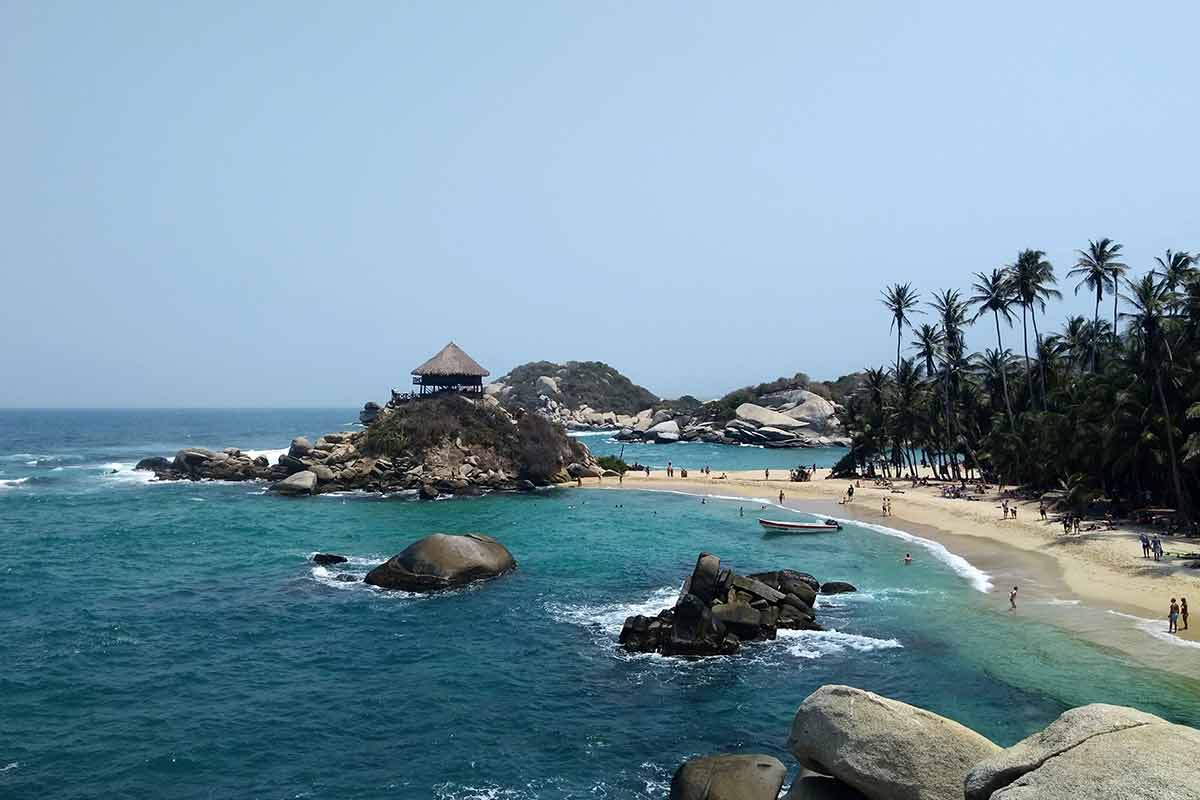
It’s home to Cabo San Juan, which is often considered one of the most beautiful beaches in South America! Here you can lounge in the hammocks or go for a swim in the turquoise Caribbean waters.
Tayrona is also great for hiking and nature-loving enthusiasts, with many trails heading through the jungle and to more remote beaches.
Along the way you can encounter some howler and capuchin monkeys, just keep your things close as they’ve been to known to make off with whatever they can grab.
The Lost City Trek
The Lost City is an ancient site dating back to around 800 A.D, which makes it a lot older than that of Peru’s Machu Picchu so it can be done without worries.
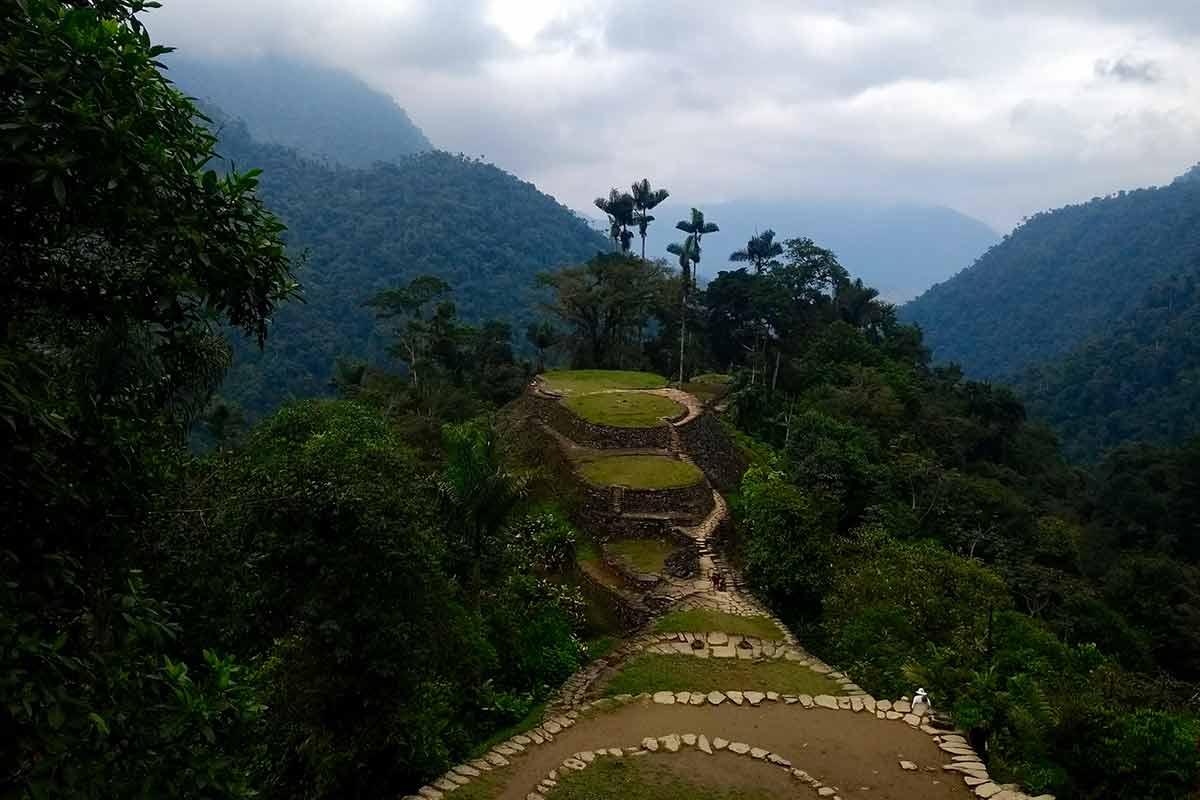
The hike here really is one of a kind, where you’ll set off hiking through the jungle for four days before arriving at the legendary citadel.
The Ciudad Pérdida (in Spanish), is then reached by climbing a series of stone steps, and at the top you’ll have some seriously impressive views of the site in contrast with the thick jungle that continuously threatens to re-claim it.
The Historic Centre
This area of Santa Marta is the best and also safest to stay in and wander around. There are many food tours and free ways to explore the local culture.
It’s also home to some nice attractions, which are great to see on your days off hiking through the jungle or exploring the further afield regions.
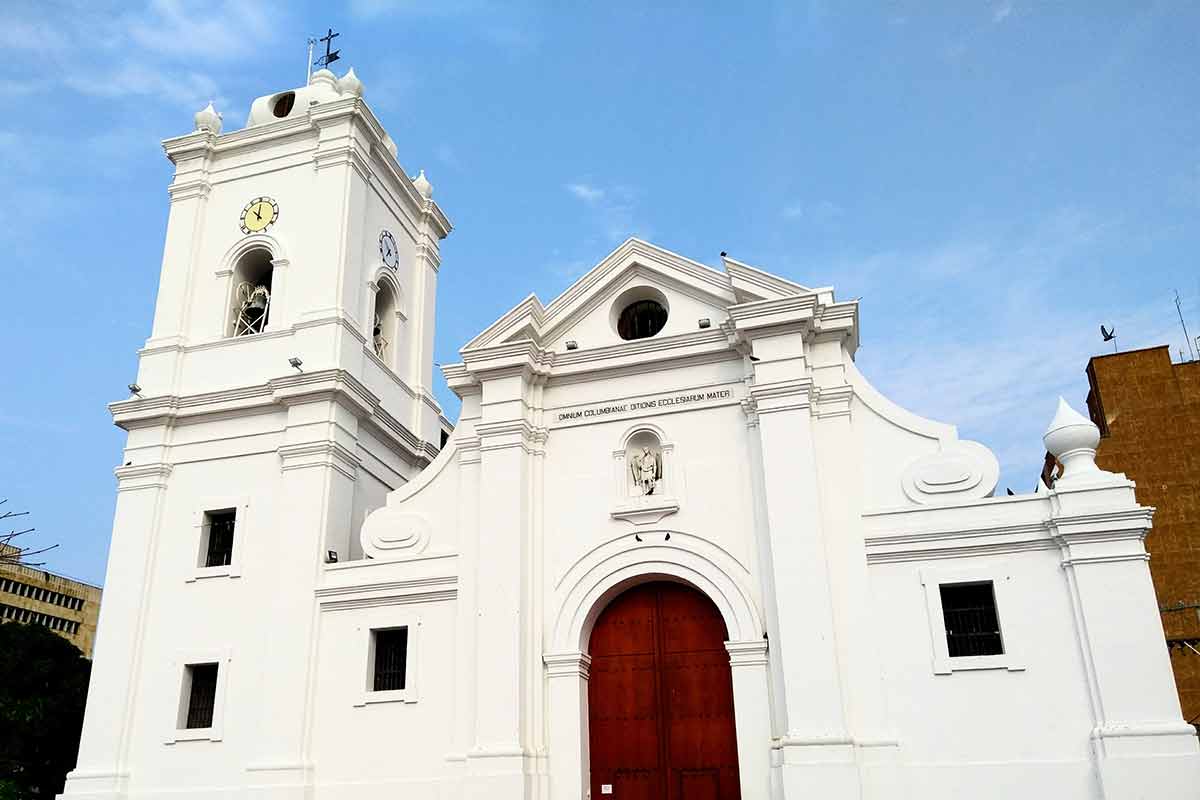
The cathedral of Santa Marta is located here, which with its neoclassical design and white wash finish makes for some great photos. Another top visit is the Parque de los Novios.
This quaint park is perfect for a stroll, with lots of small monuments to see and benches to rest on (it gets pretty hot here in the midday sun).
In the evening the square comes alive with many popular bars and restaurants located around its exterior.
The Guajira Desert
Being honest, the Guajira deserves a section of its own (due to the amount of things to see, but also as it’s kind of far from Santa Marta).
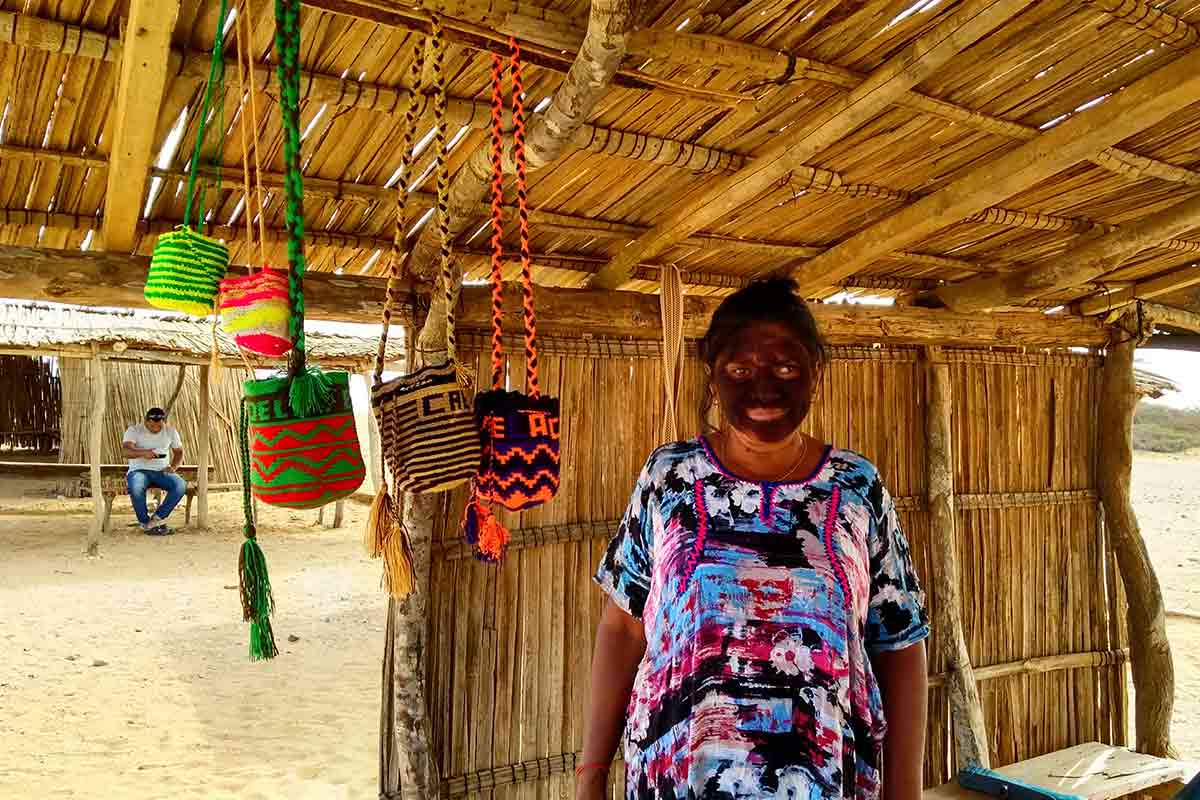
Regardless, this scorching desert is home to some stunning, remote beachside villages such as Cabo de la Vela, and the mysterious indigenous tribe that is the Wayuu.
Just make sure to bring lots of water and sunscreen as temperatures regularly soar above 100°F here. To get here you’ll first need to take a bus to Uribia and then into the desert.
Soon we’ll make a guide on visiting The Guajira, so keep your eyes peeled.
Where to Stay in Santa Marta
Despite it being commonly referred to as a beach town, Santa Marta is actually quite a big city stretching over 3 miles.
The best area to stay in near the Mariner, which is much safer than some of the more gritty areas further inland. We recommend staying at Masaya, which is just two blocks from the marina.
With an on-site pool for cooling off when the midday sun is searing, this hostel also has a villa-style feel with a nice design and good quality rooms.
Best Time to visit Santa Marta
We’ve spoken a lot about the best time to visit South America on this blog (George is absolutely obsessed with checking the weather when we travel).
Best described as seasonal and tropical, the weather in Santa Marta is consistently hot year-round, although rainfall is more likely at certain times.
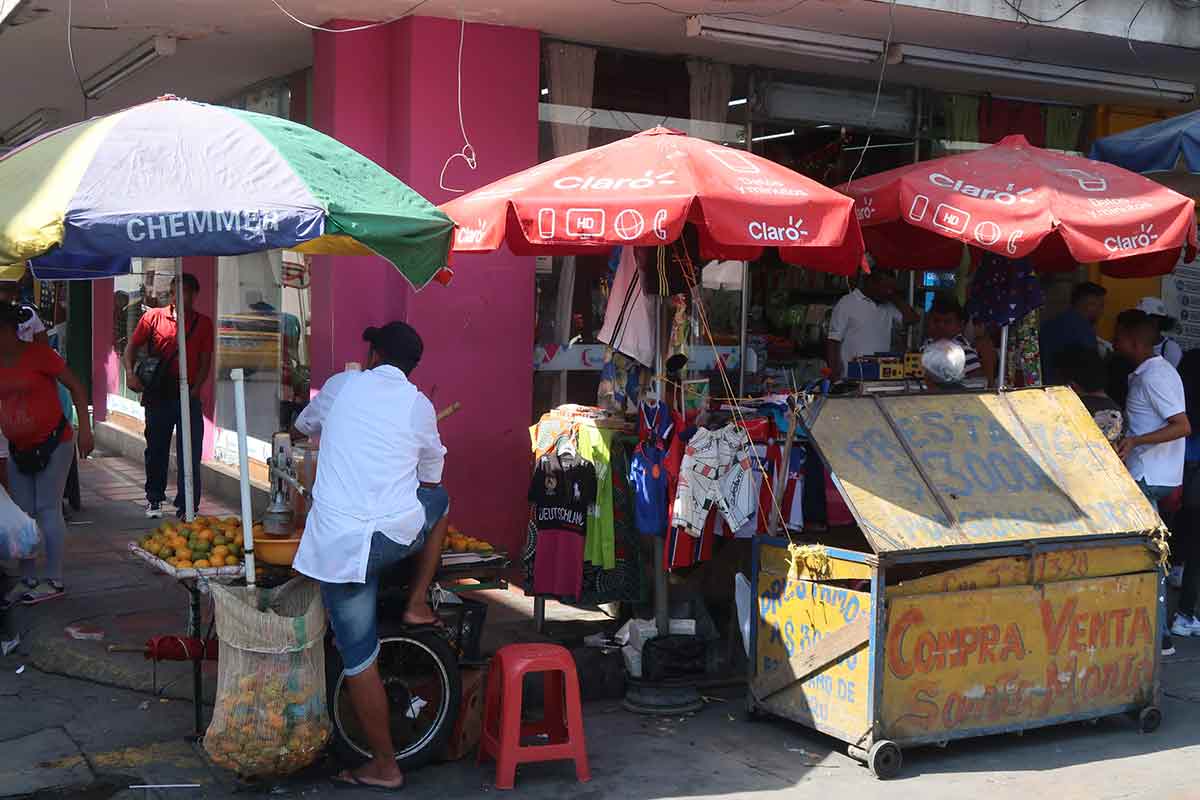
The wet season runs from May until October, and has the hottest daily average temperatures which range from 82-84°F. Highs can reach up to 88°F (May and June being the hottest months), whilst lows circle around 79°F.
Rainfall is heavier during this time of year, with between 2-5.5 inches falling throughout each month. October is overall the wettest month with 5.5 inches of downpour. Then we have Santa Marta’s dry season, which runs from November until April.
Average daily temperatures are similar to the wet season, although slightly cooler with those of 81-83°F. Highs can reach up to 88°F, and lows of 75°F (January being the “so-called” coolest month, although it’s going to feel pretty warm whenever you visit).
Aside from the shoulder month of November, which has 2 inches of rain, this time of year is very dry. Each of these months has anywhere from 0-0.5 inches of precipitation, making it the perfect time to head to the beach.
March is our recommend month to visit, as not only is there little rain and great daily temperatures, but it’s also home to Barranquilla’s Carnival (the second biggest in Latin America).
You can easily get here from Santa Marta in just a couple of hours to get involved with all of the debauchery and good times!
Santa Marta Backpacking Tips
Below we’ll share some of our best tips for visiting Santa Marta based on our time spent here.
- The best area to stay in is the Mariner! When arriving at the bus station (which is quite far in-land), take a taxi to this safer and well set-up area.
- We suggest the Massya hostel for the ultimate experience but you’ll find some great hostels such as the Viajero which are great for backpackers.
- Of course most of the best attractions are located outside of the city, so be sure to compare different tour operators (there’s loads around the mariner) for the best value, and also those who will handle all of the logistics for you.
- We recommend spending a minimum of one week in Santa Marta (or in the region). Honestly, it’s just one of those areas where you’ll need the time to see all of the incredible sights close-by. Of course if you like an adventure, then you’re better off staying within Tayrona National Park, or making a longer stay in The Guajira Desert by basing yourself there.
- Overall March is the best month to visit Santa Marta. Here you’ll have solid daytime temperatures, and very little rain. It’s also when the nearby carnival in Barranquilla is held annually.
Got travel insurance for Santa Marta?
Things to do in Santa Marta
And that’s all for our guide to backpacking Santa Marta!
Located along Colombia’s beautiful Caribbean coast, this city is the place to be for its nightlife and atmosphere.
It’s also a great place to base yourself to explore all of the amazing things and sights out there in the region.
In this guide we’ve covered everything you’ll need to know about Santa Marta. This includes the best things to see and do, the best time to visit, where to stay and much, much more.
We hope you enjoyed reading this guide! If you have any questions, feel free to drop a comment below and we’ll get back to you as soon as we can.
Be sure to read our full South America backpacking guide for more tips!
👉🏽 P.S. If you’ve found this guide helpful, buy us a coffee here to say thanks! Or, support us by downloading our South America Travel Bible to get our best content.
“Dear traveler! Some links in this post contain affiliate links. Meaning, if you click through and make a purchase, book a hostel or sign up for a tour, we may earn a small commission at no additional cost to you. Your support means a lot and helps us to carry on traveling and maintaining the quality of this site for you.”

